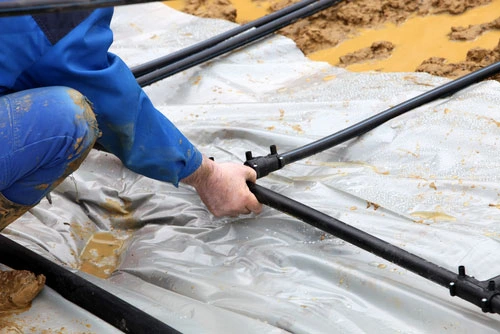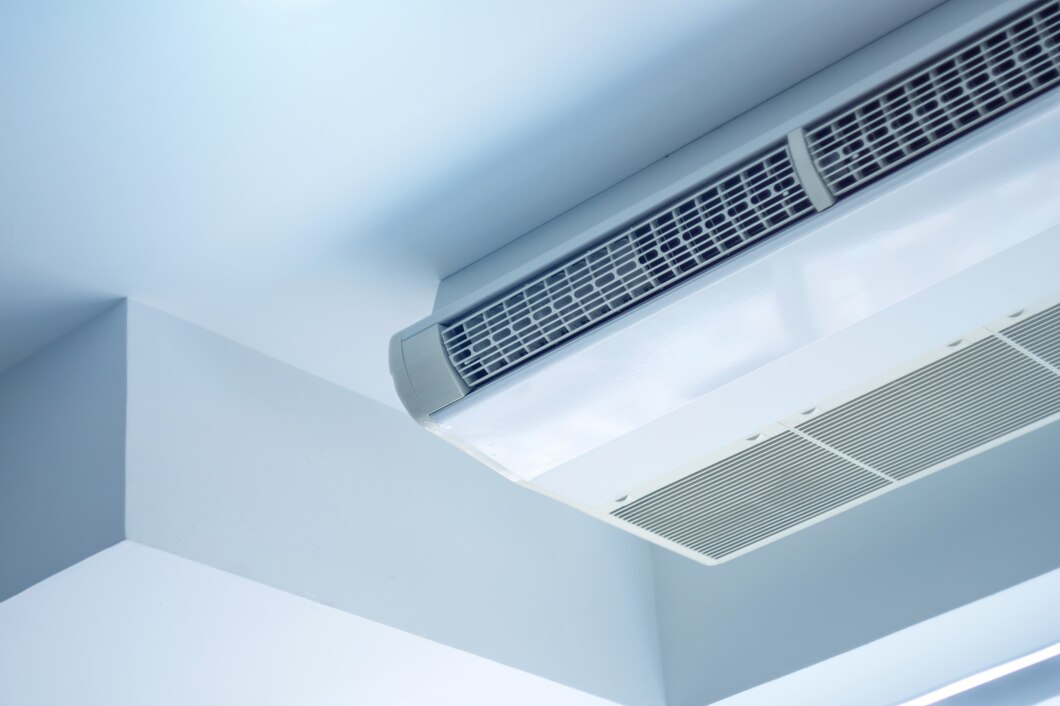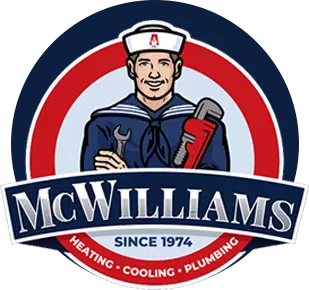Blog
Introduction

Geothermal Heating And Cooling: How It Works
Geothermal heating and cooling works by a very efficient process of heat transfer. Geothermal systems do not, in and of themselves, produce heating or cooling like a standard furnace or air conditioner. Instead, this type of HVAC system captures heat and moves it from place to place. Removing heat from an indoor setting produces cooling, while heating involves extracting outdoor heat and moving it inside to make a home or business building warm and comfortable.
The two main types of geothermal heat pump systems are ground-loop and water-loop systems. Ground-loop geothermal installations are the more common.
The basic concept of geothermal heating or cooling relies on the fact that, at a certain distance under the ground, the temperature of the soil or the water stays consistent throughout the year. No matter how hot or cold the weather gets at the surface, about six to 10 feet below the ground the temperatures will always be in the range of 45 to 70 degrees. For this reason, even a frozen region of soil (such as a residential front yard) can still serve as an effective medium for heat capture and release. This heat transfer occurs in the ground loop.
The Ground Loop
The ground loop is a long series of pipes buried in the ground at a depth where temperatures remain consistent year-round. In a closed-loop system, the ground loop contains water or an antifreeze solution that circulates through the outdoor pipes, to an indoor heat exchanger and air handling unit, and back to the outdoor pipes again. As this liquid moves through the ground loop outside, it absorbs or releases heat depending on temperature demands, the needs of the homeowner, and the conditions of the ground.
In the winter, for example, the liquid in the ground loop absorbs heat from the soil around it. The heated liquid then travels into the system’s indoor unit, which contains important components such as the heat exchanger and the air-handling system that distributes warm air throughout the building. Heat is extracted from the liquid to the heat exchanger. The blower fans send air over the heat exchanger. The air absorbs heat and is sent into the ductwork and to vents throughout your building, where it warms the indoor environment. The cooler liquid in the system is then circulated back to the pipes in the outdoor ground loop, where it acquires more heat and begins the cycle of heat transfer over again.
Summertime operations are very similar, except they work in reverse. The water or antifreeze in the system absorbs heat from inside your home or commercial facility, then releases it in the ground loop outside. This process provides cooling for the indoor spaces of your building.
Vertical Ground Loop Or Horizontal Ground Loop?
Since the ground loop is such a vital part of a geothermal heat pump system, it must be placed correctly so that it will work at its most effective and efficient level. Depending on the conditions at your home or business, you may find you have to make a choice between a vertical ground loop or a horizontal ground loop. Both types of loop systems work equally well, but the choice between them is usually governed by how much ground space is available for the loop.
A horizontal ground loop is probably the most common of the two. It is installed over a wide area of ground and is buried at the optimum level of six to 10 feet. Horizontal ground loops require a substantial amount of open ground space for installing the pipes. The loop pipes are buried in trenches around 100 feet long. The piping for the ground loop is often coiled and stacked to provide more area for heat transfer.
In contrast, a vertical ground loop is installed in holes drilled deep into the ground, usually to a depth of 400 feet or more. The loop pipes are placed into these holes, which are typically placed about 20 feet apart. Circulation of the heat-exchange medium occurs as it does in a horizontal loop, except the water or antifreeze solution may need additional pressure to keep it moving in an up-and-down direction.
Horizontal ground loops are used in situations where there is plenty of open ground space available for the digging and trenching required to install the pipes. Many rural or suburban homes have adequate ground area for this installation, as do individual commercial buildings that are built on their own plots of land. Ground loop installation can be made even easier and more convenient if the builder or designer makes specific plans for geothermal systems during the initial phases of home or commercial construction.
Vertical ground loops are appropriate for situations in which there is little ground area available for loop installation. Whereas horizontal loops are installed wide, vertical loops are installed deep. Common instances where ground loops are appropriate include urban or suburban settings where ground space is at a premium. They are also used in applications where the topsoil is thin and there isn’t enough soil available to bury the loop at the required depth. Rocky soil or layers of bedrock under layers of topsoil can also require the use of a vertical loop system.
Preparing For A Geothermal Ground Loop Installation
Whether you’re using a vertical ground loop or a horizontal ground loop, some preparation will be necessary before installing the loop and the other components of the geothermal system.
- Preparing the yard: Before installation begins, your HVAC contractor should make sure the yard is as clear as possible. Removal of lawn furniture or other portable items will be necessary. Existing structures, concrete slabs or underground sprinkler equipment may need to be relocated.
- Preparing for disruption: Your geothermal installer will take all necessary steps to protect your yard and landscaping, but the digging and trenching required to install either type of ground loop will inevitably cause some disruption and damage to your outdoor areas. Surfaces and lawns may be displaced and large holes may appear. Trenching and digging equipment will leave tracks leading up to the site where the loop is installed. Mud and water may accumulate in tracks or holes, especially if the digging intersects with an aquifer or groundwater source.
- Sizing: The geothermal system you choose must be properly sized to provide the correct amount of heating and cooling for your residence or commercial establishment. This does not refer to the physical dimensions of the equipment. Instead, sizing refers to the capacity and output of the equipment, which affects how well the system will be able to heat and cool your building. You should have your HVAC professional conduct a heating and cooling load calculation on your home or commercial building before choosing or installing a geothermal system. This involves a careful assessment of the physical and thermal characteristics of the structure, then a mathematical calculation that shows how much heating and cooling will be needed to keep the building’s indoor spaces at the temperature you prefer. When your contractor knows the building’s heating and cooling load, he’ll be able to recommend equipment of the proper size and capacity to satisfy that load. Make sure the load calculation is performed according to industry-accepted sources and techniques, such as the Air Conditioning Contractors of America’s Manual J, “Residential Load Calculation.”
Benefits Of Geothermal Heating And Cooling
Whether you choose a horizontal or vertical ground loop, you’ll see substantial benefits from the geothermal system you have installed.
- High Efficiency And Cost Savings: Geothermal systems are incredibly efficient, providing heating efficiency levels of 400 percent or more. Their high efficiency means they can reduce your monthly heating and cooling expenses by 50 percent or more.
- Improved Comfort: Geothermal heating and cooling are consistent, which reduces hot or cold spots in your home.
- Flexibility: A geothermal system is very quiet and can be used in any climate for any size of residence or commercial facility.
- Environmentally Friendly: Geothermal systems burn no fossil fuels and produce no greenhouse gases. They use relatively small amounts of electricity during operation.
McWilliams Heating, Cooling and Plumbing provide top-quality HVAC sales, service, and installation to customers in Lufkin, Nacogdoches, and the surrounding areas in Texas. Contact us today for more information on geothermal heating and cooling and whether a horizontal ground loop or a vertical ground loop would work best for your residential or commercial application. Remember this article What is the Difference Between Horizontal and Vertical Geothermal Ground Loops?
Image Provided by Shutterstock.com
Share This :
Emily
Table of Contents
Discover New Blog Posts
A well-functioning air conditioning (AC) system is essential for maintaining home comfort, especially during the warm months in places like Splendora. When your AC unit […]
The summer heat is right around the corner, and with it comes increased use of air conditioning systems in Shepherd. A well-maintained AC condenser unit […]
Air conditioning systems have become an essential part of modern living, providing much-needed comfort during the warm months. In Cleveland, where temperatures can rise significantly, […]







